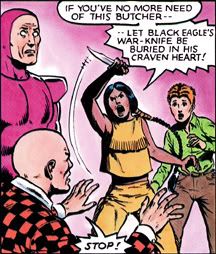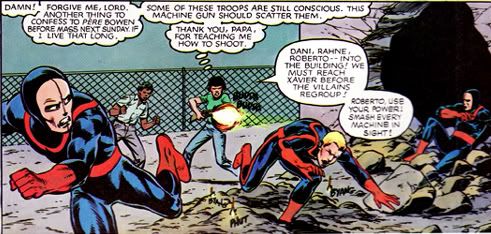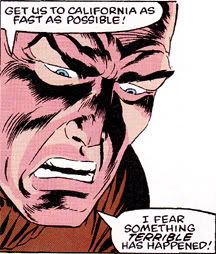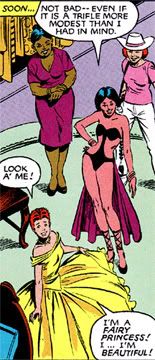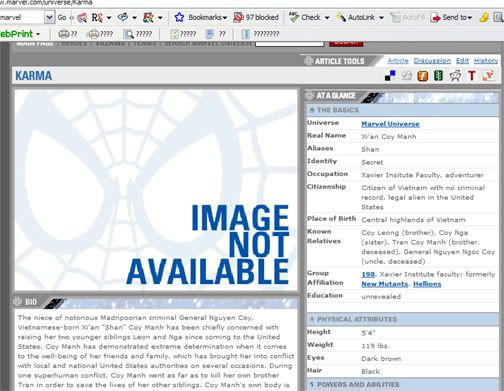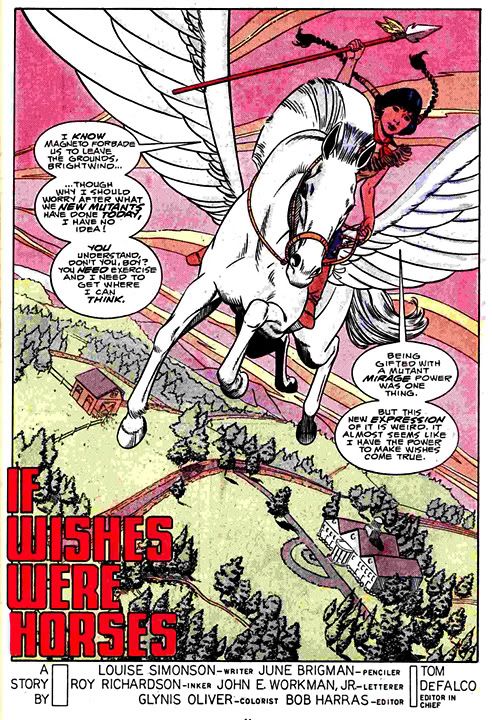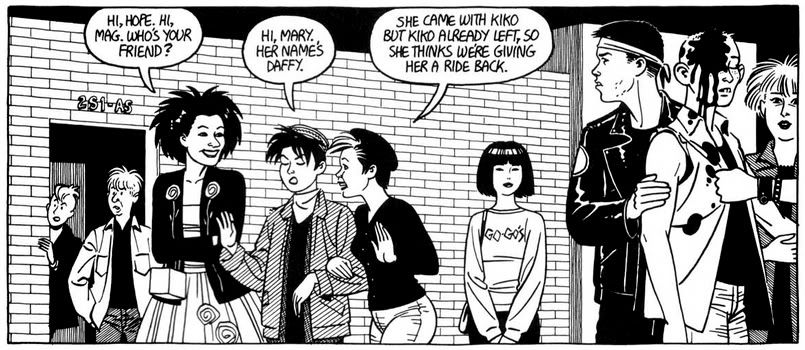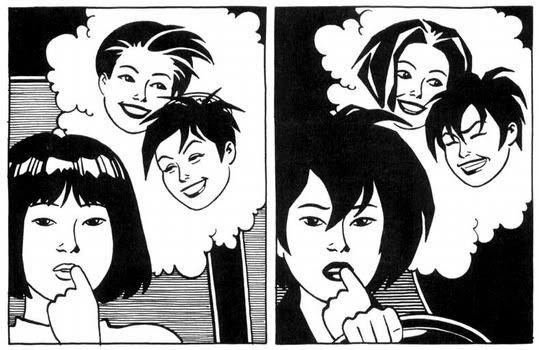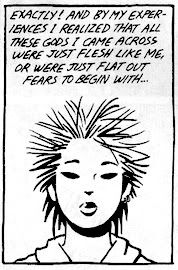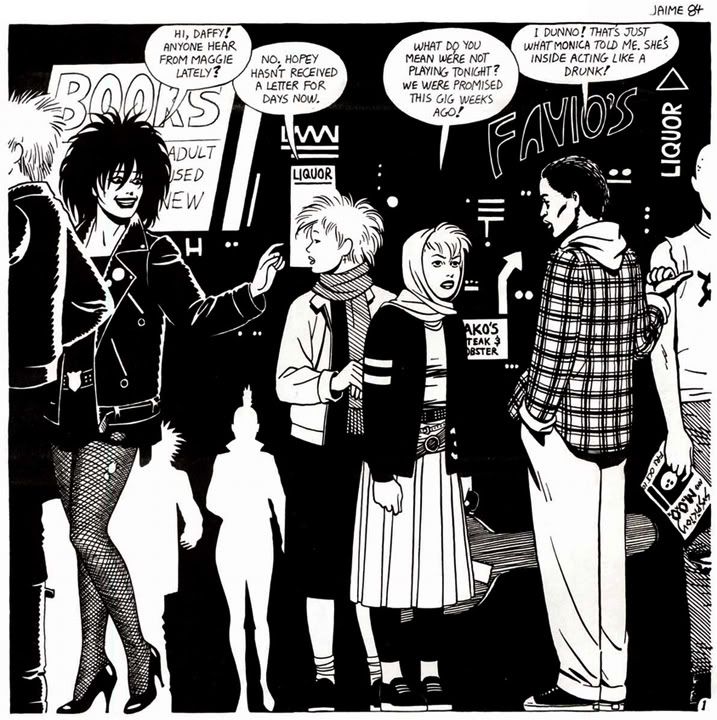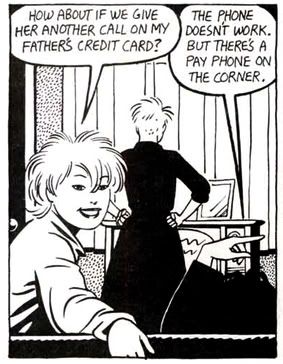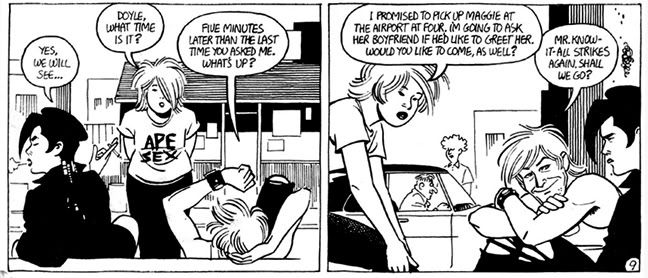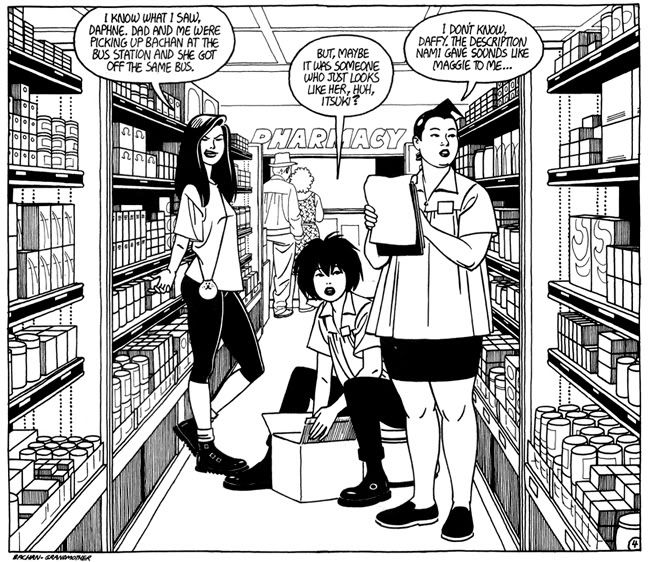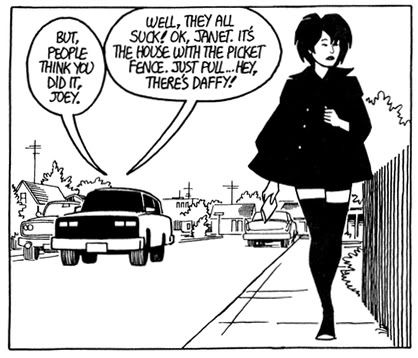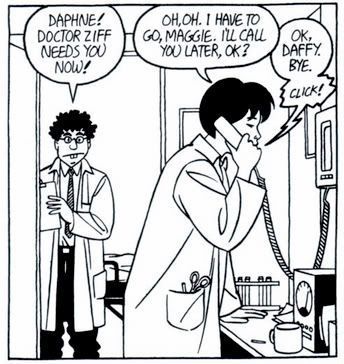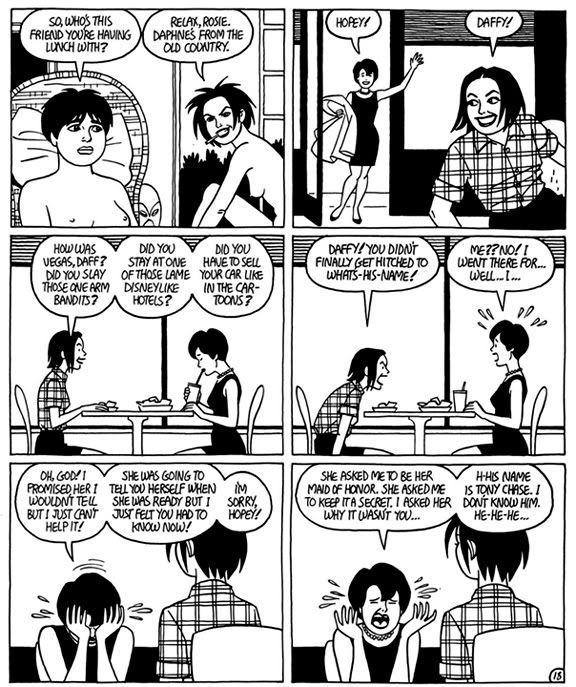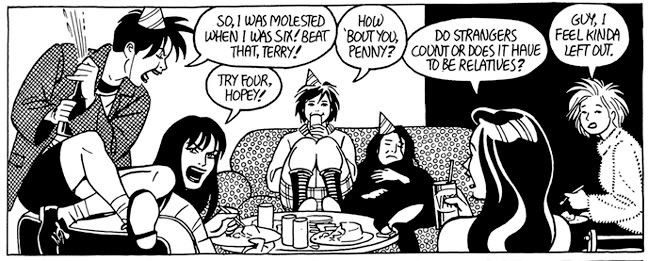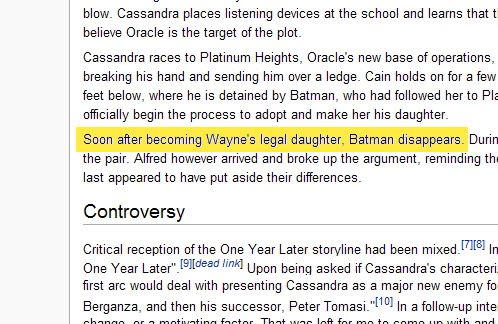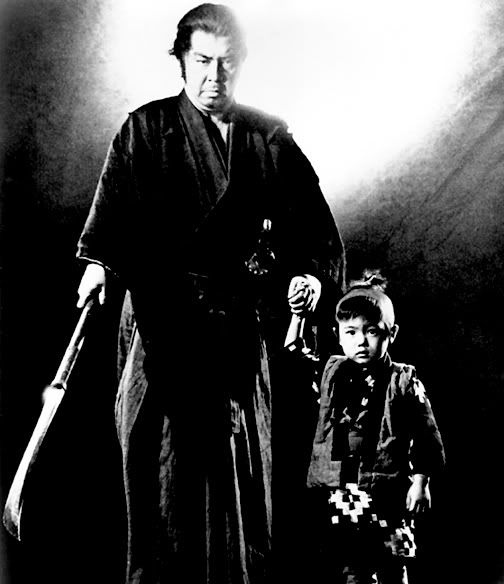 My plan vould necessitate the abandonment of the so-called monogamous comic book
My plan vould necessitate the abandonment of the so-called monogamous comic bookreader relationship... Regrettable, yes. But it is, you know, a sacrifice required for the future of the sequentially-obsessed segment of the human race.
Recently, over at
Occasional Superheroine, Valerie D'Orazio asked her readers what they would do if they were in charge of DC. I answered her there, but my response was off the cuff and under-developed. And who wants to write a novel-length comment to someone’s blog? So, because no one demanded it, I’m expanding my answer and developing it further right here in my own
li’l secret corner of the comics fan
blogosphere.
Where no one will ever see it.
My strategy is threefold. First of all, I'm not at all worried about alienating and losing longtime comics readers as I am interested in tapping the potential market for people who haven't been reading them. Current readership for these kinds of mainstream products is a shell of what it was in the 1990s and I think that's a state of affairs that has to be addressed rather than accepted as the norm. Actually, I can't imagine putting out a product where you're merely interested in carving a piece out of a very limited demographic, accepting gains and losses on a temporary,
short term scale, when ideally you should be attempting to increase the overall pool of consumers for a healthier industry overall. And greater profits for your shareholders. Secondly, I think slavish adherence to
long term continuity-- and especially the current form of "company-wide crossover"-- can, and often does, cripple creative storytelling. And thirdly, as we all know, currently there are also major economic considerations.
Basically, I want to build readership, cut costs, increase profitability and produce better quality stories. Those are my primary concerns.
I can't take full credit (or blame as the case may be) for these ideas. Some were suggested by others at
Occasional Superheroine and I latched onto them because they fit my strategy and just seemed like excellent ideas.
1) Digital Comics. Nothing new here. This has been bandied about forever, and I think the time is ripe. My initial plan was to phase out the monthlies entirely and end the overall "DC Universe narrative" completely, as dinosaurs who have been obsoleted by evolution but still haven't realized they're extinct. Then someone else suggested digital comics, and it seemed a worthy compromise: Put the monthlies online-- offering them in full color-- instead of printing them on paper.
In this way, we could placate the current readers by keeping their precious ongoing DC narrative and save everyone a lot of money which will help appeal to new readers. After all, 3.99 is a ridiculous amount to pay for a flimsy 24-page comic book, no matter how glossy the pages or overworked the computer coloring. Already
newspapers are starting to abandon print editions in favor of strictly online content. Like it or not, this kind of change is rapidly becoming commonplace, especially in the current economy. You either control your fate and extend your life, or the marketplace buries you.
To go digital, we'd have to figure out which online model works best. Free stuff with advertising (similar to The Onion), or subscription stuff you could download. A Kindle-style system available through Amazon.com. Or a combination of all of those methods. As editor-in-chief or CEO, it wouldn't be up to me to come up with the delivery system; that's what I'd be paying others to do. Believe me, we'd come up with something workable.
Failing that, I'd employ...
2) The Manga-esque Solution. The other idea, which is one that I sort of half-
assedly wrote about at
Occasional Superheroine and
Torsten Adair fleshed out brilliantly, is combine all the monthlies into massive
Shonen Jump-style phonebooks. I like this idea more than the digital comics one, but both could be linked together.
In the interval between my comment and
Torsten's, I thought more about this and came up with a variation on what he suggested. I’d do two of these!
One, I’d call
The Brave and the Bold and it’d have all of DC’s second tier characters. The other I’d call
World’s Finest and it would feature Batman, Superman and Wonder Woman plus the Flash and Green Lantern or some other front rank character that fits.
There'd be all kinds of reader involvement items too... fan profiles and drawings (an in-print
DeviantART, if you will), creator info, contests, connections to our online content. Things that make readers feel involved with the company, part of a culture.
I’d have these books printed on super-cheap paper, in black and white with just a few color pages, and they’d be completely disposable, which would also solve the storage problem. My idea is for the reader to read it then recycle it. Recycle, recycle, recycle. Good for the environment.
Shonen Jump hits readers with over three hundred pages of material for 4.99. If we kept production costs down we could probably price these things at 7.99 each for five hundred pages. Under ten dollars, anyway.You’d get all your seventy-odd years of continuity and massive crossovers, but they’d be all in two easily affordable books. And they
wouldn’t come out on the same day. One would come out the second week of the month and the other on the fourth.
These would be the place for all your journeyman writers and artists and all the pedestrian ongoing DC universe narrative junk I’m about as interested in as I am in following the
storylines of
Days of Our Lives. Maybe work a superstar in there once in a while in case things get boring, but the idea would be to tell the stories efficiently… and cheaply. And, as
Torsten Adair also wrote, these could be colored and offered online
a la point the first above, and collected into trades.
I know this is problematic. Some people prefer to buy twenty color magazines they can hold in their hands each month, damn the costs. There's also tradition and comic readers seem notoriously reluctant to mess with the familiar. Still, I believe they'd gripe and complain and go
Internettishly ballistic, and then they'd come back.
They might not like sharing their little pop culture esoterica with a few hundred thousand or more new readers who are part of the heathen uninitiated, but eventually new alliances would be formed and they'd have a larger pool from which to draw their lynch mobs and effigy-burners whenever we screwed up their favorite characters.
Retailers would probably hate this, too. These
manga-style books would be big, bulky products. Difficult to display, difficult to store. But I imagine they’d hate not having any comics in their shops at all even more, if we went entirely digital. Oh, and I suppose it would also kill the back-issue collectible market as we know it.
Still, I think the trade-offs are more than worth it.
3) The Kirby Book Model. Now we come to the meat. The
entrée, if you will. The big hamburger a la Grant Morrison. Jack Kirby should get credit for this because he posited something similar in interviews years ago when he was doing his Fourth World stuff at DC.
The other thing I’d do in conjunction with these changes is to start printing stand-alone creator-driven graphic novels, just like a real book publisher. In these,
there'd be no company-wide continuity and they could be in any style or take place in any era. For example, when you buy a Dan Brown novel you don’t expect it to relate to one of John
Grisham's. Why do comics automatically have to be interrelated to the point of forcing buyers to buy 20 books a month just to keep up?
Here’s how it’d work: You’re an industry leading writer and/or artist. The
toppermost of the
poppermost, as the lads from Liverpool used to say. You have an idea for a great story featuring Superman. You pitch it. If I like it, we publish it as a book. You’re not bound by page counts or someone else’s massive epic. It would involve abandoning continuity as we know it, and the emphasis would be on the story and how you tell it rather than its place in some enormous yet turgid narrative involving seventy years of people flying around in tights punching each other. The only continuity that would matter would be the story’s internal continuity.
And the sky would the limit on plot, tone and subject matter. If your Superman story involves his grisly demise, then so be it. Why should that interfere with another writer’s graphic novel about Superman the super-dog catcher? You want to write a Barbara Gordon
Batgirl story? Fantastic! We’ll put it on the schedule alongside the Cassandra Cain book. Adult, juvenile, whatever. We’ll sort that out on the cover and make sure it gets into the right part of the bookstore.
From inception to final product, these would be handled exactly like prose novels. The only difference would be the sequential artwork.
The idea would be to get these babies on the New York Times Best Sellers list, sell a few million, have complete, self-contained stories that could then be optioned off to Hollywood (or not, if you don’t think it should be) and everyone can have a big slice o’ the pie.
That’s what I’d do if I ran DC Comics.
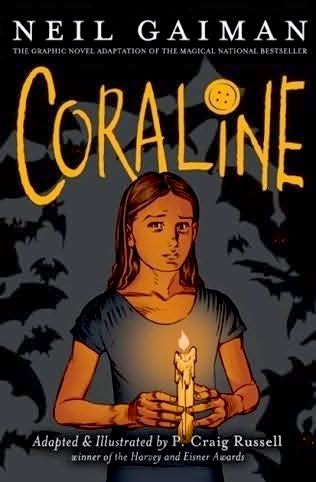 This morning the Amazon.jp delivery guy-- middle aged, tousled black hair, short and stocky, all bundled up against the late winter rains but as cheerful as ever-- just dropped off my most recent purchases: Coraline, adapted from the Neil Gaiman novel by P. Craig Russell and The Savage Sword of Conan volume one, reprinted by Dark Horse from the old Marvel b&w magazine, apparently beloved by our president.
This morning the Amazon.jp delivery guy-- middle aged, tousled black hair, short and stocky, all bundled up against the late winter rains but as cheerful as ever-- just dropped off my most recent purchases: Coraline, adapted from the Neil Gaiman novel by P. Craig Russell and The Savage Sword of Conan volume one, reprinted by Dark Horse from the old Marvel b&w magazine, apparently beloved by our president. The Savage Sword of Conan is an obese, economical volume with a lot of fantastic artists trapped inside its pages. Barry Windsor-Smith, John Buscema (frequently inked here by Pablos Marcos), Neal Adams, Jim Starlin and... strangely enough... Alex Nino, an artist whose work I've always admired but never associated with sword and sorcery. The most breathtaking pages are the ones where Alfredo Alcala inks Buscema. As a team, they blow all the other couplings apart. It looks like fine book illustration, lots of etching-style fine line work. Wondrous. Windsor-Smith's work doesn't fare as well. A lot of the lines just don't seem to have reproduced well here, and I'm guessing they didn't have the resources to gather the original artwork (if it still exists) and instead shot from old issues of the magazine itself, losing some resolution in the process. Too bad. It's not enough to wreck the whole book, unless you're pretty exacting. And I'm not. Not all the time, anyway.
The Savage Sword of Conan is an obese, economical volume with a lot of fantastic artists trapped inside its pages. Barry Windsor-Smith, John Buscema (frequently inked here by Pablos Marcos), Neal Adams, Jim Starlin and... strangely enough... Alex Nino, an artist whose work I've always admired but never associated with sword and sorcery. The most breathtaking pages are the ones where Alfredo Alcala inks Buscema. As a team, they blow all the other couplings apart. It looks like fine book illustration, lots of etching-style fine line work. Wondrous. Windsor-Smith's work doesn't fare as well. A lot of the lines just don't seem to have reproduced well here, and I'm guessing they didn't have the resources to gather the original artwork (if it still exists) and instead shot from old issues of the magazine itself, losing some resolution in the process. Too bad. It's not enough to wreck the whole book, unless you're pretty exacting. And I'm not. Not all the time, anyway.


